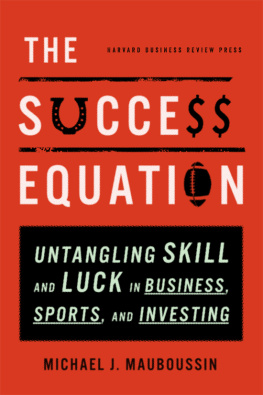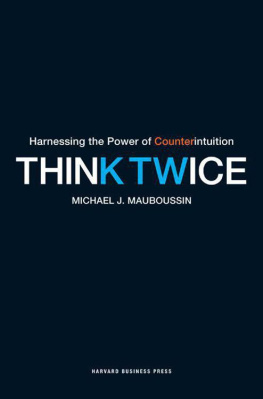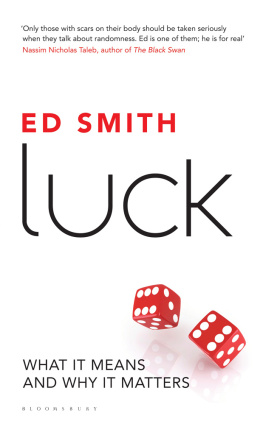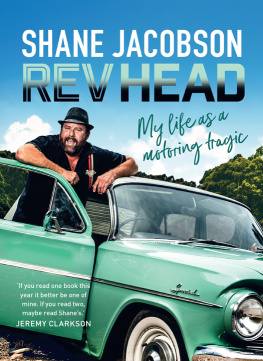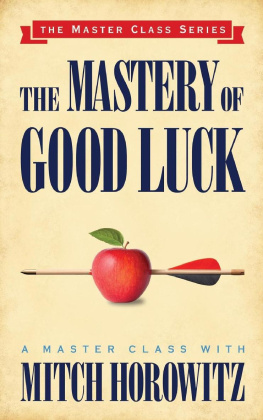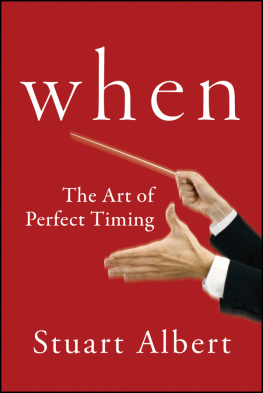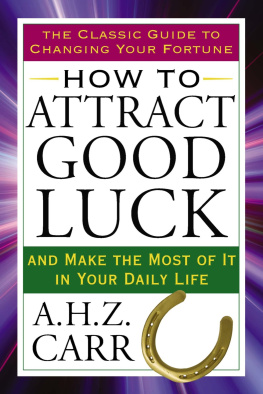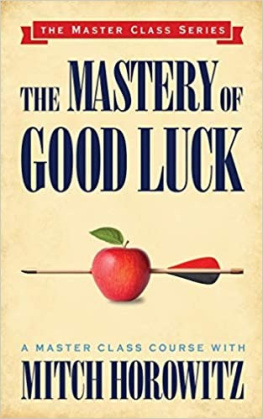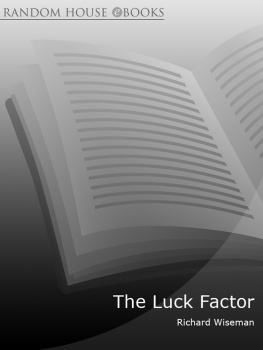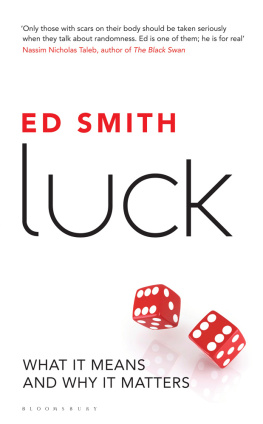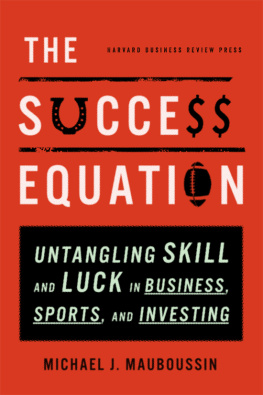Copyright 2012 Michael J. Mauboussin
No part of this publication may be reproduced, stored in or introduced into a retrieval system, or transmitted, in any form, or by any means (electronic, mechanical, photocopying, recording, or otherwise), without the prior permission of the publisher. Requests for permission should be directed to , or mailed to Permissions, Harvard Business School Publishing, 60 Harvard Way, Boston, Massachusetts 02163.
The success equation : untangling skill and luck in business, sports, and investing / Michael J. Mauboussin.
p. cm.
Includes bibliographical references.
ISBN 978-1-4221-8423-3 (alk. paper)
1. Success. 2. Success in business. 3. Ability. 4. Fortune. 5. Decision making. I. Title.
ACKNOWLEDGMENTS
I am very grateful to have had the opportunity to learn from so many thoughtful and generous people. Writing a book is a long journey that is sometimes very difficult. I am blessed by a wonderful network of friends and associates who helped me along the way.
My colleagues at Legg Mason Capital Management have not wavered in their support. Whereas I had to do some convincing to pursue my prior book, I was strongly encouraged to pursue The Success Equation. Particular thanks go to Jennifer Murphy, Bill Miller, and Sam Peters. LMCM's deep commitment to ongoing learning makes it a special place to be.
A number of people graciously shared their time and knowledge with me. They pointed me to useful stories, explained points, and straightened my course when I veered off it. These include Sam Arbesman, Brian Burke, Aaron Clauset, Jerker Denrell, Paul DePodesta, Doug Erwin, John Galvin, Daniel Kahneman, Michael Raynor, Matt Salganik, David Shaywitz, Tom Tango, Phil Tetlock, Duncan Watts, David Weinberger, and Richard Zeckhauser. Tom and Duncan read specific chapters and provided valuable feedback.
Scott E. Page has been a tremendous inspiration and source of encouragement from the beginning of this project. In particular, Scott put together a terrific conference at his home institution, the University of Michigan, in February 2011, dedicated to this theme. Scott is an amazing source of ideas and a great and generous friend.
It's time-consuming to read the draft of a manuscript and to provide feedback to the author. I was blessed to have a great collection of folks help me out. These include Phil Birnbaum, Michelle Mauboussin, Bill Miller, Michael Persky, Sam Peters, Al Rappaport, Chris Wood, and an anonymous reviewer. I was particularly pleased to have Phil Birnbaum, one of my heroes in the sabermetrics community, take the time to share his thoughts and criticism.
Andrew Mauboussin, my oldest son, made a very meaningful contribution to the book. He did research on a number of topics and generated all of the simulationswork that is beyond my technical ability. He also read each of the chapters and chipped in with helpful comments. I was proud to cite the research he did with Sam Arbesman. I appreciate your contribution, Andrew.
I benefited immensely from working with Laurence Gonzales, who edited the book. Laurence is a very talented writerDeep Survival is perhaps his best-known workwho improved the clarity and quality of the text throughout. It's valuable that he doesn't come from the same professional world as I do, because it allows him to be critical with fresh eyes. He's also an editor who is old school, which I love about him. No nouns as adjectives in this text. He's a terrific source of ideas and has taught me a great deal about writing. Thank you, Laurence.
It's hard for me to say enough about Dan Callahan, my colleague at Legg Mason Capital Management. Dan does it all: quality research, vivid exhibits, and great editing of early drafts. And, as a former pro baseball player, he had particular interest in, and insight into, the sports material. On top of it all, he did all this while satisfying his other analytical responsibilities within the firm. Dan has also developed a bit of side expertise: using creative approaches to generating book titles. For this book, we employed a site developed by Matt Salganik called www.allourideas.orgcheck it out, it's cool. Dan not only coordinated the project, he contributed the winning title, The Success Equation, which beat out scores of competitors. Thanks, Dan.
I loved working with Tim Sullivan, my editor at Harvard Business Review Press. Tim supported the idea for the book from the beginning and showed great aplomb in guiding the whole process. His ideas are sprinkled throughout the book and his edits left the proper material on the cutting room floor. I also received great assistance from others on the team at HBRP, including Erin Brown, Kevin Evers, Stephani Finks, and Jen Waring. Monica Jainschigg's sharp-eyed edits also tightened and improved the manuscript.
My wife, Michelle, provides steadfast love, counsel, and support. She encourages me to pursue my intellectual and athletic passions, which keep me going mentally and physically. She also offered useful comments on the initial manuscript. Michelle's mother, Andrea Maloney Schara, is integral to our family's activities, maintains a commendable desire to learn, and injects some cognitive diversity into all of our lives. Finally, I thank my children, Andrew, Alex, Madeline, Isabelle, and Patrick. I'm confident that with hard work and grit, each will successfully solve the success equation in his or her own way.
INTRODUCTION
SORTING THE SOURCES OF SUCCESS
M Y CAREER WAS LAUNCHED by a trash can.
Like many seniors in college, I wasn't sure what I wanted to do for a living, but I knew that I needed a job. Drexel Burnham Lambert, an investment bank that was hot at the time, came on campus to recruit students for a new training program. My interview went well enough that I was called to the firm's headquarters in New York City. I put on my best suit and tie, polished my shoes, and headed to the Big Apple.
Early the next morning, we candidates gathered in a vast conference room and listened intently as the leader of the program told us what to expect for the day. You will have full interviews with six members of our staff, she informed us, and then each of you will have ten minutes with the senior executive in charge of our division. When it was clear that she had everyone's attention, she added, If you want the job, you'll have to shine in that interview.
My half dozen interviews went as well as could be expected. When they were over, a member of the staff led me down a long corridor to an office paneled in dark wood, with deep wall-to-wall carpeting and a picture window overlooking a panorama of downtown Manhattan. A sharp-eyed administrative assistant ushered me in, and the senior executive greeted me warmly. Then I saw it.
Peeking out from underneath a huge desk was a trash can bearing the logo of the Washington Redskins, a professional football team. As a sports fan who had just spent four years in Washington, D.C., and had attended a game or two, I complimented the executive on his taste in trash cans. He beamed, and that led to a ten-minute interview that stretched to fifteen minutes, during which I listened and nodded intently as he talked about sports, his time in Washington, and the virtues of athletics. His response to my opening was purely emotional. Our discussion was not intellectual. It was about a shared passion.

